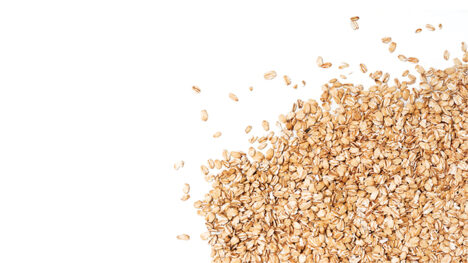
You know all the facts: smoking kills and you need to quit. But how do you break the habit? Victor Parachin gives 8 ways to help you quit.
Puffing of the smoke of tobacco one to another, making filthy smoke and stink thereof to exhale athwart the dishes and infect the air, when very often men that abhor it are at their repast?” wrote King James I of England, in 1604. “Have you not reason then to be ashamed, and to forbear this filthy novelty, … a custom loathsome to the eye, hateful to the nose, harmful to the brain, dangerous to the lungs?”
This citation from King James clearly reveals that as far back as the 17th century smoking was considered an unhealthy and unwise activity. With the passing of time and the advent of modem science, overwhelming evidence verifies the viewpoint of the insightful king.
According to a 2004 report in Queensland’s Sunday Telegraph, smoking has killed 700,000 Australians over the past 50 years. Yet one-quarter of Australians continue to smoke, despite all the evidence that smoking is a killer. In fact, smoking is the number-one cause of disease in the country, with some 20,000 dying of smoking-related diseases annually. The report also claimed that half of the kids who take up smoking at age 15 will be dead as a result of it before they reach middle age.
It’s easy to see why. Smokers are more than three times more likely than nonsmokers to suffer a heart attack or stroke, 12 times more likely to contract chronic lung disease, and 25 times more likely to contract lung cancer. Smoking causes up to a third of all cancer deaths and a quarter of all fatal heart attacks in the US.
And how easy is it to get hooked? According to the chief epidemiologist of the World Health Organisation, it takes just 100 cigarettes—four packs—of the deadly product.
Incredibly, more than 40,000 studies have proved that smoking causes disease and death.
As a result of all that type of evidence experts say that not smoking, or quitting if you smoke cigarettes now, is the number one thing people can do for their health. Here are eight ways to quit smoking. By doing so you will take control of your health and your life.
1. Repeat the statement: “If I quit now, I will live longer.” Here is a simple but important fact: the body has an amazing ability to heal itself. For example, after 15 years off cigarettes, the risk of death for ex-smokers returns to almost the level of people who have never smoked.
Male smokers who quit between the ages of 35 and 39 add an average of five years to their lives. Females who quit add an average of three. These are averages, with many people extending their lives by considerably more.
2. Do some research. Knowledge is power, and information can lead you to liberation. There are many excellent books available dealing with the dangers of smoking and how to quit. Do your own research and find books with approaches that speak to you and relate most to your circumstances and personality.
Visit a library or book store, or check out related web sites for accurate, motivational and helpful information. Read and reflect, then put the information into action. “Action,” as the philosopher Thomas Fuller observed “is the proper fruit of knowledge.”
3. Develop your own personal motivations for quitting. Despite all the scientific evidence about the dangers of smoking, most people who quit do so for more personal reasons. A man may quit because he witnessed a loved relative die from smoking-related disease. A woman may quit because she is pregnant and concerned about the health of her unborn child.
A recently retired man quit because his energy level was getting lower and lower. “Knowing your own reasons for quitting—and remembering them when times get tough—will be a big help to you in becoming a nonsmoker,” says Edwin Fisher Jr, PhD, in 7 Steps to a Smoke-free Life.
Dr Fisher advises going through a list similar to this one, checking the reasons that would be most important to you:
- I will have more control over my life.
- I will be healthier.
- My heart rate and BP will be lower.
- I will save a lot of money.
- I am tired of smoky-smelling breath and clothes.
- I will be a better example for my kids.
- I will have more energy.
- The chance of fire in my home will decrease.
- I lessen my chances of death from heart disease, chronic bronchitis, emphysema, and cancer.
“Once you’ve made your list, study it for two minutes a day, every day,” he advises.
“Keep adding to it as new reasons occur to you. Make this an active process, not just a crumpled list lost in a drawer… . Continue to collect reasons to quit. When you have an urge to smoke, ask someone for a reason to quit. Every time you hear one, add it to your list.”
4. Consult with your doctor and other medical authorities. Make an appointment to see your doctor letting him or her know your plan to quit smoking. Most doctors are eager to support you in quitting smoking and can help you develop a program that meets your unique personal and medical needs.
A doctor can guide you through your quit options and strategies, which include various nicotine-replacement products, including nicotine patches, nicotine gum, nicotine nasal spray and nicotine inhalers. Some are available over the counter, while others require a medical prescription. If you are uncomfortable with drug therapies, many smokers have experienced success using programs such as the 5-Day Plan of some years ago, Breathe-free and “Quit Now,” a 7-step approach to quitting and therapies such as acupuncture.
5. Exercise. Fortify your decision to quit by taking regular exercise. Many studies show a clear link between exercise and the cessation of smoking. In one study researchers tracked the progress of 281 women enrolled in a smoking-cessation program. All the women attended the same behavioural smoking-cessation sessions. However, half also engaged in three vigorous exercise workouts per week while the other women attended health lectures. The results were impressive. At the end of the 12th week, twice as many exercisers were smoking free as nonexercisers.
Additionally, the women in the exercise group had gained less weight. Researchers in smoking cessation believe exercise significantly aids efforts to stop smoking by:
- Building confidence/boosting motivation.
- Reducing nicotine cravings, especially in the early weeks.
- Cutting stress while promoting relaxation.
- Improving moods that, in turn, reduce depressive feelings.
- Assisting in weight management, a concern for many who quit smoking.
Consider the experience of Judith Knauer, who wrote this letter to Prevention magazine: “I am 45 years old, and I had been a smoker for 27 years. Since I began to jog, I haven’t touched or wanted a cigarette. The mere thought of inhaling cigarette smoke now fills me with revulsion. I suspect that there is some biochemical or physiological connection between jogging (or running) and no desire to smoke.”
6. Focus on the positive. Rather than thinking about how much you miss having a cigarette, remind yourself how great it is that you have made the commitment and have stopped smoking. Focus on how much better food tastes, how good it is not to wake up each morning coughing, how your breath no longer smells like smoke, how much healthier you are becoming day by day, how much better your complexion appears, that your teeth are whiter and your eyes brighter.
7. Don’t hesitate to pay for help. Counsellors and therapists offer ongoing classes specifically designed to help people stop smoking. These classes are usually highly effective but a fee is charged to attend. Don’t be like some people who hesitate to pay for help to quit smoking. The modest fees charged will yield large and lifetime benefits.
“You may not want to pay for a stop-smoking program, but if you’re a typical smoker, you’re going to pay somebody,” Patricia Allison points out in her book Hooked But Not Helpless. “Right now you’re paying the cigarette companies anywhere from $60 to $100 a month. And what about the throat lozenges, special toothpaste, sinus medication and nasal sprays? …
“That’s what smoking is costing you now. Eventually, you’ll be paying hospitals and surgeons. Doesn’t it make sense to invest a modest sum now to save yourself thousands of dollars in the future? Money spent to stop smoking is an investment, one of the best you will ever make.”
8. Make plans to deal with the stress of nonsmoking. Beating an addiction is not an easy task. Be prepared to deal with the stresses connected to smoking cessation by making some advance preparation. The American Heart Association (AHA) offers these tips for handling the stress on nonsmoking:
“Don’t talk yourself into smoking again. When you find yourself coming up with a reason to have ‘just one,’ stop yourself. Think of what triggered you and come up with a different way to handle it. For example, if you feel nervous and think you need a cigarette, realise that you could take a walk to calm down instead. Be prepared for times when you’ll get the urge. If you smoke when drinking, cut down on alcohol so you don’t weaken your promise to yourself.”
The AHA also suggests changing your habits. Instead of having a cigarette after dinner, go for a walk. Frequent places where smoking is not allowed. In restaurants, ask to be seated in the non-smoking section. Spend your time with people who don’t smoke. And ask others to be respectful of your desire to quit, and to be supportive.









